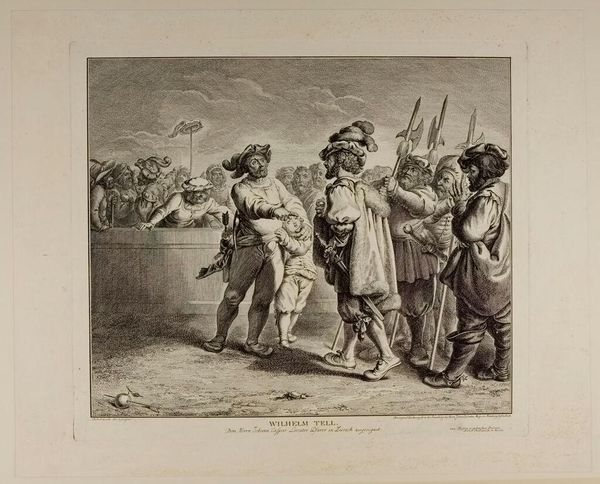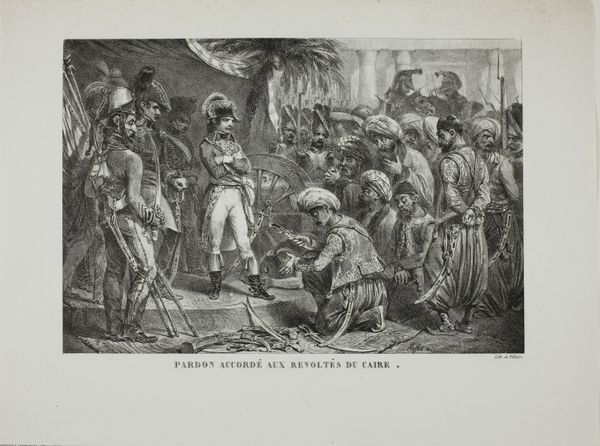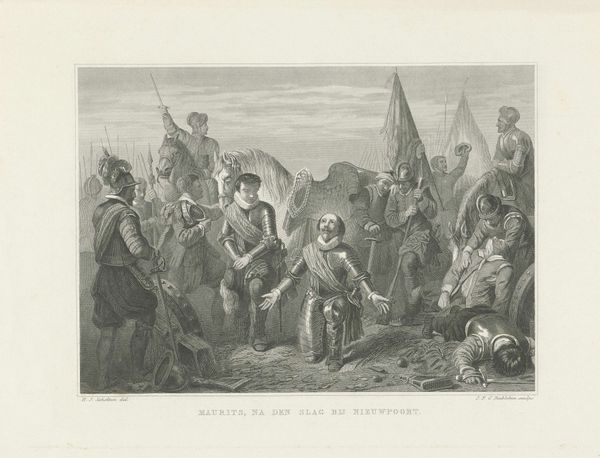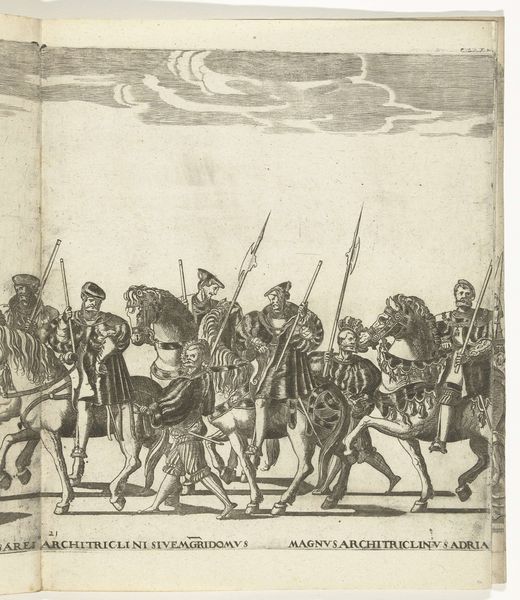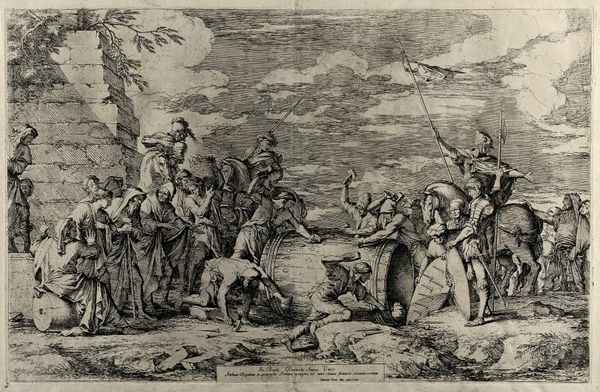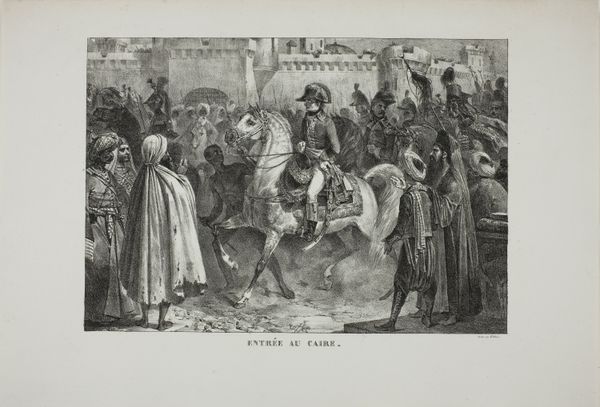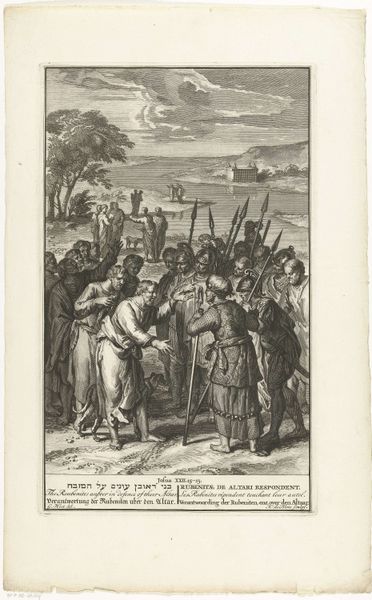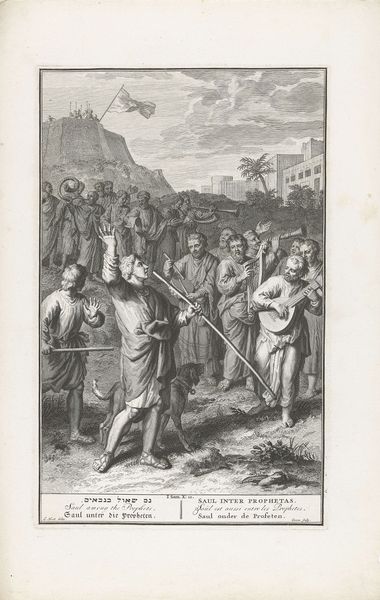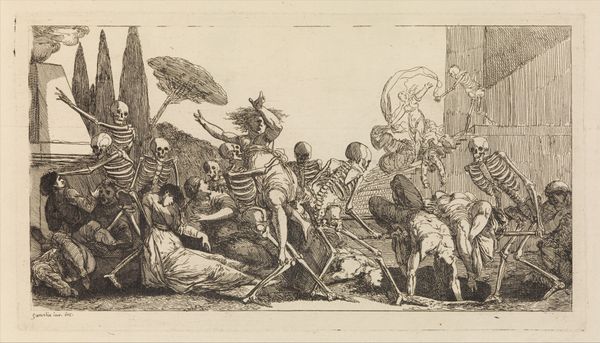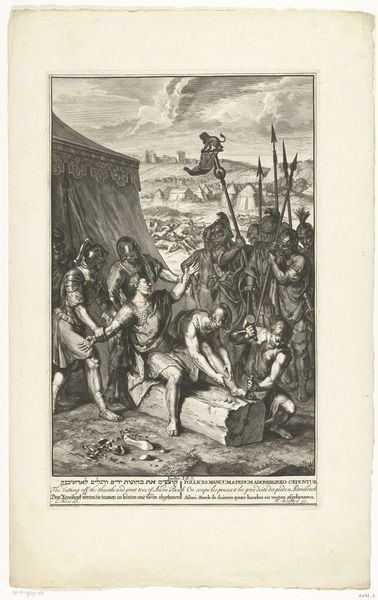
drawing, lithograph, print, paper
#
drawing
#
narrative-art
#
lithograph
# print
#
landscape
#
paper
#
romanticism
#
history-painting
Dimensions: 212 × 306 mm (image); 294 × 419 mm (sheet)
Copyright: Public Domain
Editor: Here we have Auguste Raffet’s "Desert March," a lithograph from 1826, printed on paper. It depicts what looks like a military procession struggling through a barren landscape. It's incredibly detailed and quite evocative of hardship. What do you see in this piece? Curator: I see echoes of the past etched in shades of gray, a visual lexicon of struggle. Consider the image of the desert itself. Across cultures, the desert often represents trial, spiritual testing, and the confrontation with one's mortality. Is this a stage for purification? What stories do you think are woven into this depiction of soldiers amidst such desolation? Editor: It definitely feels like a story about endurance and maybe even the futility of military campaigns. There’s a weariness that’s palpable, a real contrast between the ambition of conquest and the reality of human limits. Curator: Precisely. And note the body language. The slumped shoulders, the aiding hands - are these not potent symbols of compassion amid conflict, an affirmation of our shared humanity transcending the goals of war? Reflect on how Raffet utilizes these familiar archetypes to convey deeper emotional truths about the human condition. Editor: I didn't think of the image as one of compassion at first glance. I was struck more by the suffering of these soldiers, and how that suffering might negate the reasons they are in the desert in the first place. I suppose compassion becomes an urgent necessity when you are faced with human failure in such a stark environment. Curator: Absolutely, seeing how those in power face mortality is an act of compassion in itself. So this landscape speaks to something elemental. We bring our meanings, our histories and humanity, to the desert. Editor: This makes me consider how much richer visual information and metaphor adds to the simple rendering of any narrative subject matter. Curator: Yes. It makes the artwork endlessly explorable, always yielding new insights.
Comments
No comments
Be the first to comment and join the conversation on the ultimate creative platform.
